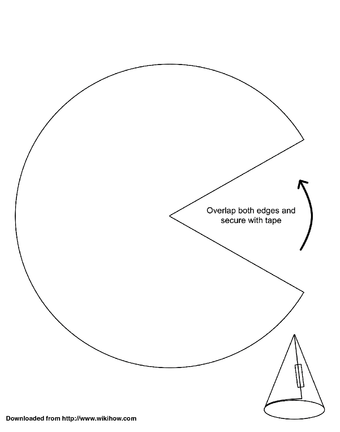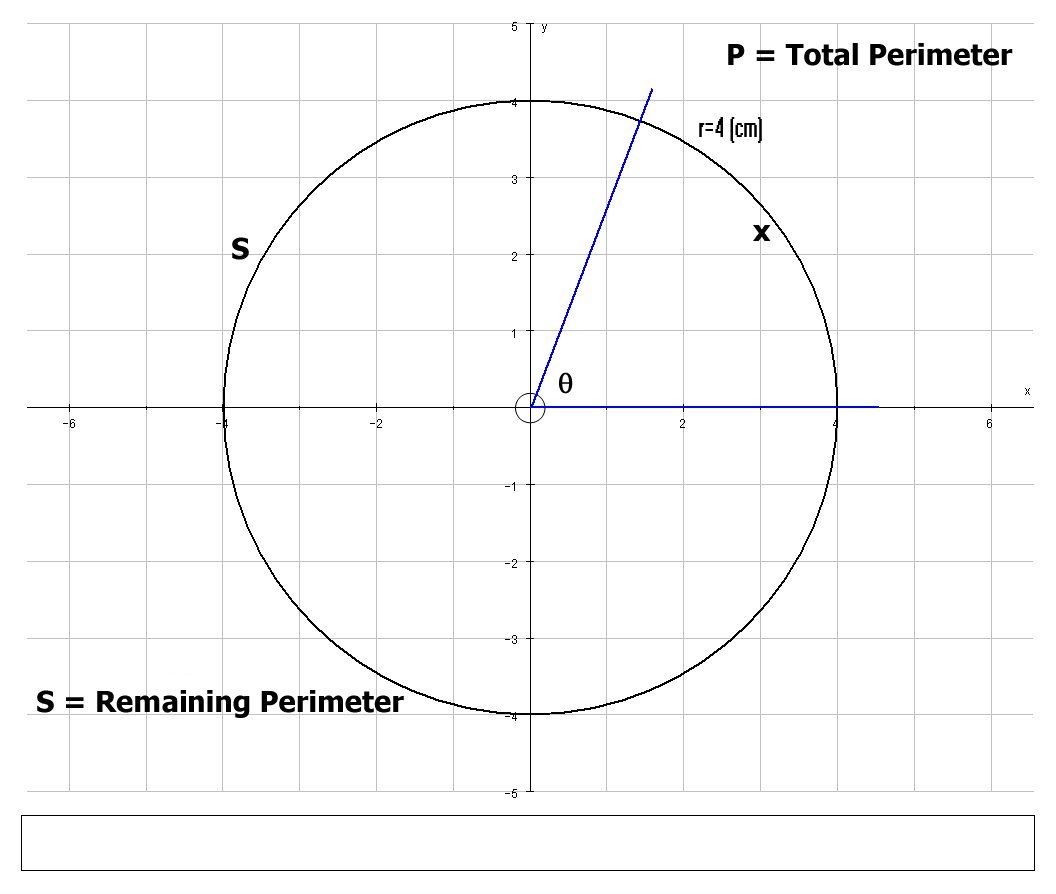A sector of arc length x cm is removed from a circular piece of paper of radius 4 cm. The remaining piece is used to make a cone. Find x so that the volume of the cone is a maximum?
1 Answer
x = (24-8sqrt(6)pi)/3 ~~ 4.61194394612852 \ cm
Explanation:
Let us define the following variables:
{ (P,"arc-length of the entire circle", cm), (x,"arc-length of the sector removed", cm), (S, "arc-length of remaining 'pac-man' shape", cm), (r, "radius of the newly formed cone", cm), (l, "slant length of the newly formed cone", cm), (h, "height of the newly formed cone", cm), (V, "Volume of the newly formed cone", cm^3) :}
Using the standard equation for the perimeter of a circle
P = (2pi)(4) = 8pi
And, we also have:
x+S = P => S = 8pi-x

This remaining arc length,
S = 2pir => 8pi-x = 2pir
:. r = 4 - x/(2pi)
We can now compute the height of the newly formed cone, as the cone will have radius
l^2 = h^2 + r^2
:. 4^2 = h^2 + (4 - x/(2pi))^2
:. h^2 = 16 - (16-(4x)/pi+x^2/(4pi^2) )
:. h = sqrt((4x)/pi-x^2/(4pi^2) )
Now, using the standard formula,
V = pi/3(4 - x/(2pi))^2 sqrt((4x)/pi-x^2/(4pi^2) )
We seek a critical point of this computed volume function wrt
V^2 = pi/3(4 - x/(2pi))^2 sqrt((4x)/pi-x^2/(4pi^2) ))^2
\ \ \ \ = pi^2/9(4 - x/(2pi))^4 ((4x)/pi-x^2/(4pi^2) )
\ \ \ \ = pi^2/9((8pi - x)/(2pi))^4 ( (16pix-x^2)/(4pi^2) )
\ \ \ \ = pi^2/9 * 1/(16pi^4) (8pi - x)^4 1/(4pi^2) (16pix-x^2)
\ \ \ \ = 1/(575pi^4) (8pi - x)^4 (16pix-x^2)
And now we can differentiate (implicitly) wrt
2V(dV)/dx = 1/(575pi^4) { (8pi - x)^4 (16pi-2x) + 4(8pi-x)^3(-1)(16pix-x^2) }
At a critical point we require that this derivative vanish, ie,
:. (8pi - x)^4 (16pi-2x) - 4(8pi-x)^3(16pix-x^2) = 0
:. (8pi - x)^3( (8pi - x)(16pi-2x) - 4(16pix-x^2)) = 0
:. 2(8pi - x)^3( (8pi - x)(8pi-x) - 2(16pix-x^2)) = 0
:. 2(8pi - x)^3(3x^2 - 48pix + 64pi^2) = 0
Which has solutions given by:
(8pi-x) = 0 => x=8pi ~~ 25.13 \ cm
(3x^2 - 48pix + 64pi^2) = 0 => x=(8+-8sqrt(2/3))pi
Initially, In order for a sector of acr-length
x = ((24 - 8sqrt(6))pi)/3 ~~ 4.61194394612852 \ cm
And if we check the graph of the volume function we can readily validate that this value of
graph{1/3pi(4 - x/(2pi))^2 (sqrt((4x)/pi-x^2/(4pi^2) )) [-5, 10, -5, 40]}


